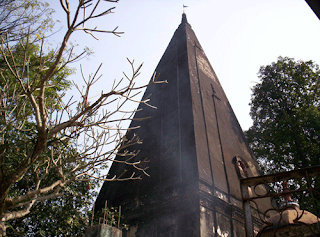 Subansiri River
Subansiri RiverLakhimpur District is located in the northern part of upper
 Journey to the upstream of Subansiri River
Journey to the upstream of Subansiri RiverTill now there are many remote and unexplored areas which may provide an immense pleasure to some one coming from over crowded technically noised world.
 Kakoi Reserve Forest
Kakoi Reserve ForestLakhimpur is the home of several snow fed rivers, wet lands and reserve forests such as Pabha Reserve, Kakoi Reserve, Dullung Reserve, Subansiri Reserve; to name a few.
 Upstream of River Subansiri
Upstream of River Subansiri These reserve and their skirting snow fed rivers were once the home of divers fauna like the Asiatic Buffalo, Rhinoceros, Tigers, Slow Loris, Clouded Leopard, Wild dog(Dhole),Himalayan Black Bear,Sloth Bear, Marval cat, Swamp Deer, White winged wood duck, Bengal Florican, python, Fresh water dolphin, Golden Mahseer etc.But in the last two decades time all that has changed due to the large scale deforestation, population explosion, construction of big river dams and so on. Under this circumstance a properly channelized ecotourism policy and multifaceted approach for conservation of natural heritage is urgently needed.
 Kohua bon on bloom
Kohua bon on bloom
Yet despite the long history of habitat loss and degradation, the eco region still harbors an impressive biological diversity in the small fragments of habitat that lie scattered throughout the district. For instance the reserve forests in the district bears immense significance as far as biodiversity is concerned. Dolphin Survey organised by "GREEN HERITAGE"
Dolphin Survey organised by "GREEN HERITAGE"
A huge numbers of medicinal, ornamentals and valuable timbers, bamboos and canes etc. are available in the hills and forests of Lakhimpur. Nature camps and trekkings can be organized in these reserve forest with the help of local forest dwelling people. In these forest rare species like climbing bamboo (Bambusa stractus) and Sia Nahar (Kayea assimea) is found widely. Apart from this more than 80 species of eye catching wild orchid varieties are scattered in these tropical evergreen forest.

River Subansiri, locally called “Tharichu” originates from Tibat in the central
 Ranganadi at Johing
Ranganadi at JohingEvery winter lots of angler from different part of North East India and
 Clouds over Kakoi Reserve Forest
Clouds over Kakoi Reserve ForestOn the other hand river Ranganadi is one of the sub-basin of the river Subansiri. The river originates from an elevation of 3440m bordering east kamang and lower Subansiri districts. In the upstream of this river there is some good potentialities of rafting and angling.

Satajan Wetland
Moreover the Bordoibam Bilmukh bird Sanctuary,Knowarbari doloni,Khabalu, Satajan wetland etc are some of the fascinating sites for migratory as well as residential bird watching in Lakhimpur. Bordoibam Bilmukh bird sanctuary is an ideal sanctuary shared shared between the Lakhimpur and Dhemaji District-diverse natural heritage and picturesque surrounding of green and sleepy mising village can easily attract any nature lover.

A Group of Assamese women going for Traditional fishing
This ideal birding site was formed after a massive earthquake that occurred in the year 1950. Apart from several endangered aquatic birds like adjutant stork and fishing eagles, some most endangered migratory water bird seek refuge amidst its cozy sanctum during the freezing Siberian, Tibetan and European winters. The eminent biodiversity zone of Bordoibam Bilmukh Bird Sanctuary is located about 50 km from the Lakhimpur town.
Tea Garden
There are nine tea gardens and tea estate in Lakhimpur district. Almost all tea garden in lakhimpur is situated in the fringe of thickly forested foot hills of
 Tree top house inside the forest
Tree top house inside the forest These tea estates, their beautiful ambience, colorful people, the old heritage bunglows of the Managers, some of which were setup by the British, may blend memories of the past to make
This will provide good opportunity for those who are interested in Angling, Trekking and nature study.
 People crossing Subansiri in a country boat.
People crossing Subansiri in a country boat.(All Photographs by : Bhaskar Bora)



No comments:
Post a Comment